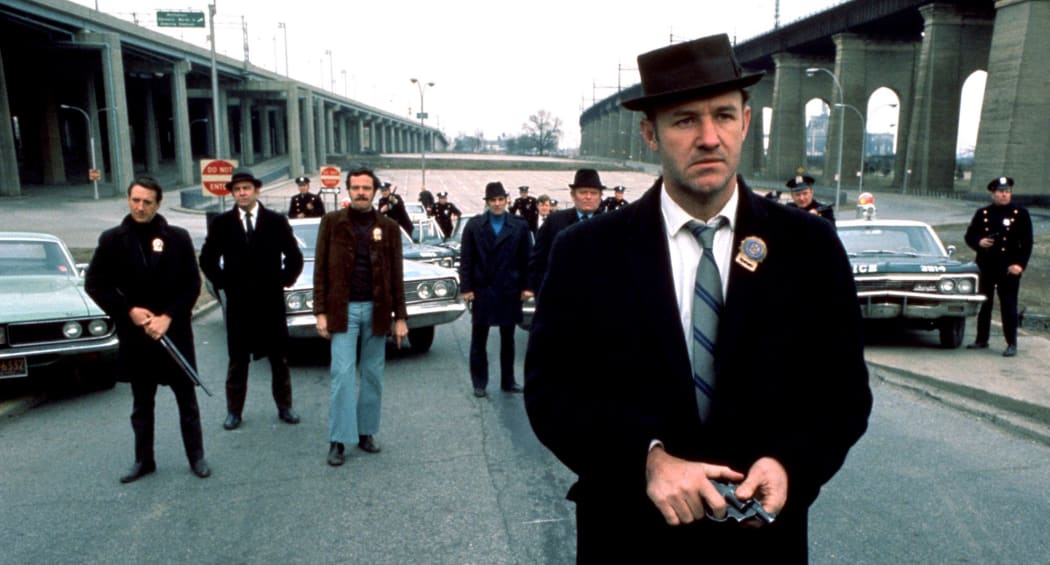
Gene Hackman as ‘Popeye’ Doyle in William Friedkin’s 1971 Oscar winner The French Connection Photo: Twentieth Century Fox
In an excellent interview with Jesse Mulligan a month or so ago, the esteemed English music journalist David Hepworth posited the theory that “there wasn’t a huge amount going on at the cinema in 1971” to partly explain why the music world was so successful that year.
Now, to be fair, I was only three years old then so my experience was more osmotic than first-hand but I have to say that that is not how I remember it.
So, I had a bit of a dig around to see how accurate my memory was. Here’s the result of that research – another of our regular chats with Jesse about the movies. We started with the biggest box office success of that year, Norman Jewison’s Broadway adaptation, Fiddler on the Roof.

Jeff Bridges, Cybill Shepherd and Timothy Bottoms in The Last Picture Show Photo: Columbia Pictures
The 44th Academy Awards took place on 10 April, 1972 and – as they still do – apply to films released in the previous calendar year. (Obviously it took them longer to count the votes back then.) Apart from The French Connection (9 Oct) taking out the big award, other nominees for Best Picture included Kubrick’s A Clockwork Orange (released on 19 Dec 1971), the aforementioned Fiddler on the Roof (3 Nov), Bogdanovich’s seminal The Last Picture Show (22 Oct) as well as the historical epic Nicholas and Alexandra which had been released on 13 December.
(Note, the dates are for the North American release of each film except where noted. Films weren't released to the same ‘day and date’ pattern that they are now and might have taken months to go fully around the USA let alone the rest of the world.)
The Last Picture Show was the most successful example of the American independent ‘new wave’ that had begun with Easy Rider in 1969 – young (mostly male) writers and directors, breaking free of the studio system to create iconoclastic visions that were Vietnam-era cynical, dark and often violent. These were grown-up movies and the trend would result in films by Coppola, Scorsese and Malick – films that would dominate American cinema until the arrival of the blockbuster with Jaws a few years later.
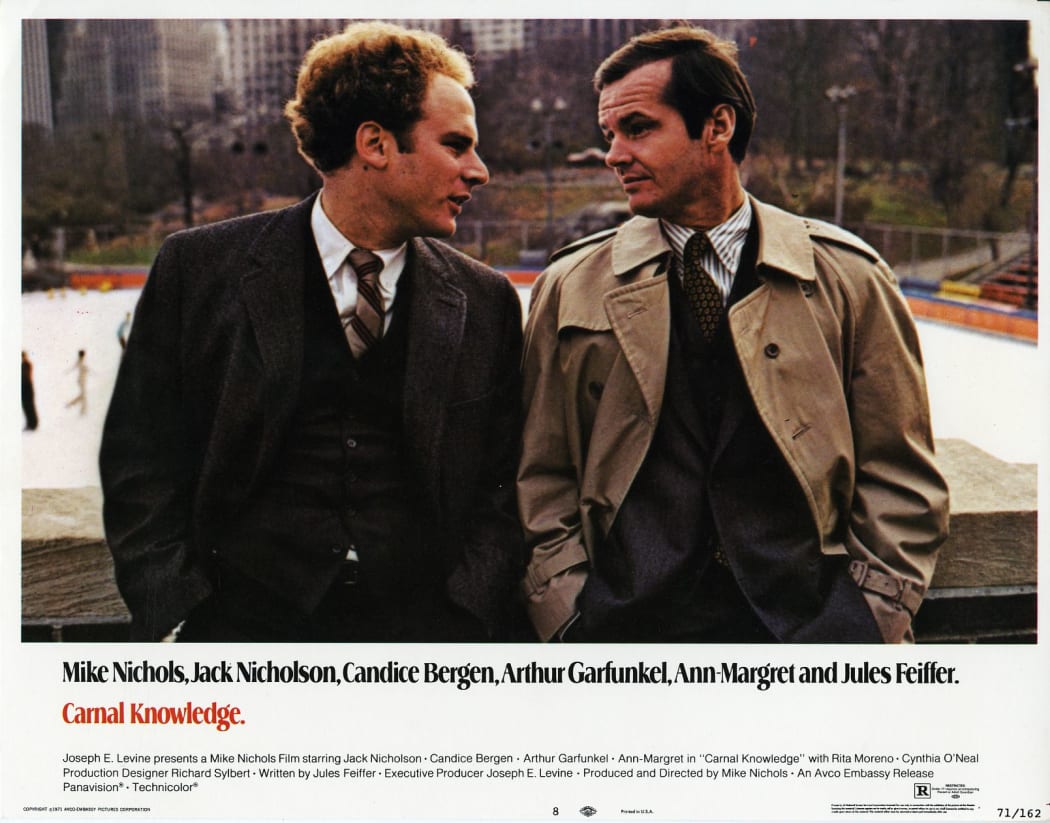
Art Garfunkel and Jack Nicholson in Carnal Knowledge. Nicholson starred in two films in 1971 and wrote and directed a third. People seemed to work harder then. Photo: Embassy Pictures
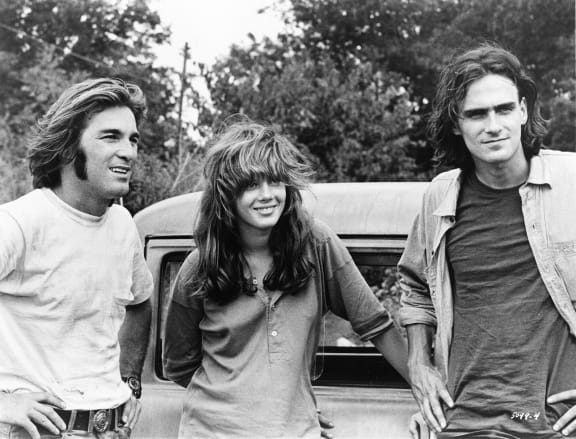
Beach Boy Dennis Wilson, Laurie Bird (known only as “The Girl” because those were the days) and singer/songwriter James Taylor in Two-Lane Blacktop Photo: Universal Pictures
Also released in 1971, Jack Nicholson and Art Garfunkel in Carnal Knowledge (30 June), written by cartoonist Jules Feiffer; Al Pacino’s first starring role in The Panic in Needle Park (13 July); Hal Ashby’s sweet and weird Harold and Maude (20 Dec) and the two great nihilistic road movies, Monte Hellman’s Two-Lane Blacktop (7 July) and the almost wordless Vanishing Point (31 March).
The American summer didn't feature wave after wave of sequels and franchises the way it does now, but the commercial cinema was in many ways just as unimaginative. Escape From the Planet of the Apes (21 May) was the third in that series, Godzilla vs. the Smog Monster (24 July) became a beloved Godzilla movie, Charlton Heston was the last man alive in The Omega Man (1 Aug) – eventually to be remade again as I Am Legend in 2007 – and Sean Connery would arrive at Christmas in his final official Bond film, Diamonds Are Forever (17 Dec).
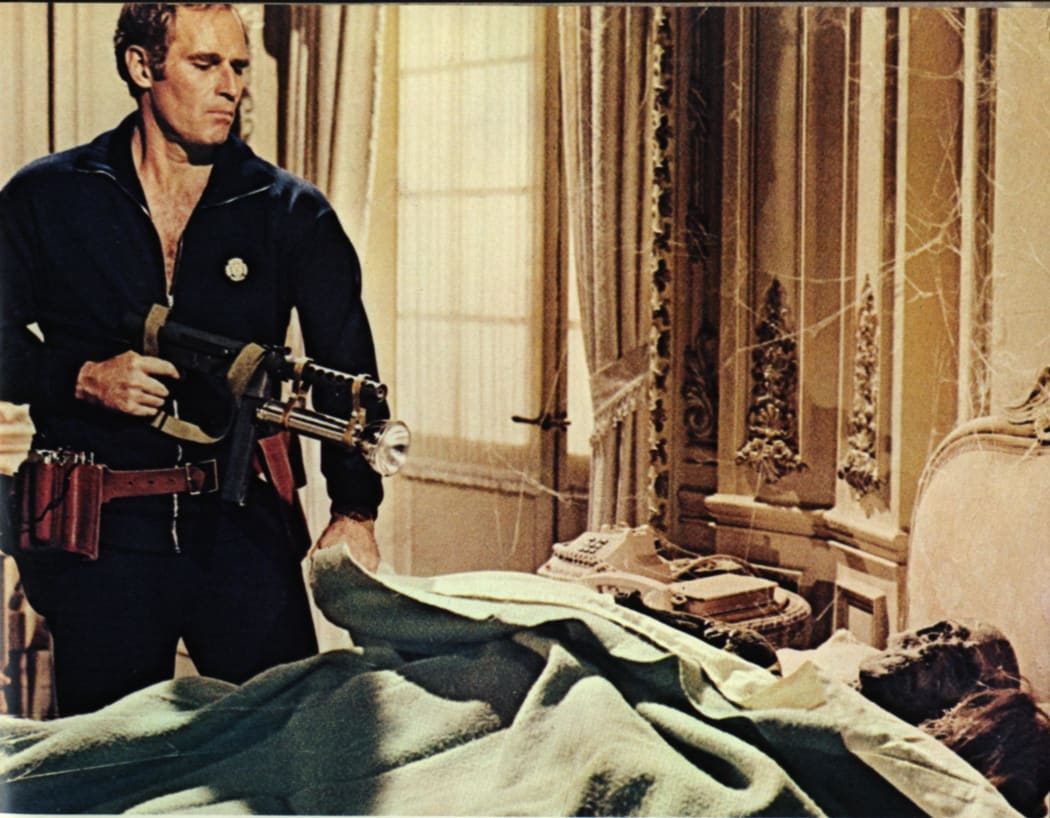
Charlton Heston and unnamed extra in The Omega Man Photo: Warner Bros
Hollywood had basically ceded the role of family entertainer to television by this point, but there were still some highlights for families: Willy Wonka and the Chocolate Factory (30 June) and Disney’s musical Bedknobs and Broomsticks (13 Dec) as well as a young Kurt Russell as a studio mailboy who discovers his girlfriend’s pet chimpanzee can predict hit shows in The Barefoot Executive (17 March).
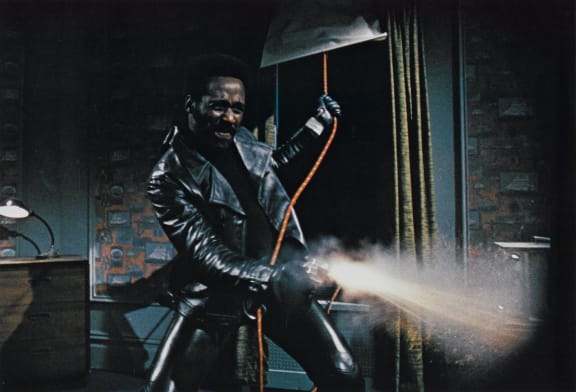
Richard Roundtree setting fashion and film trends in Shaft Photo: Metro-Goldwyn-Mayer
But mainly, the early 70s was a great time to be a grown-up cinemagoer. Michael Caine in Get Carter (18 March), Richard Roundtree in Shaft (2 July), Peckinpah’s violent and disturbing Straw Dogs (29 Dec), the right-wing wet dream of Clint Eastwood’s Dirty Harry (23 Dec).
Eastwood had a big year in ’71: Dirty Harry, The Beguiled (19 May) and on 3 November he released his first film as a director, Play Misty for Me. He’s still working hard today at age 89.
Other big names to release their debut films in 1971 were Jack Nicholson (Drive, He Said on 13 July), George Lucas (THX-1138 on 11 March), Steven Spielberg (Duel on 13 Nov) and, in England, Mike Leigh (Bleak Moments).
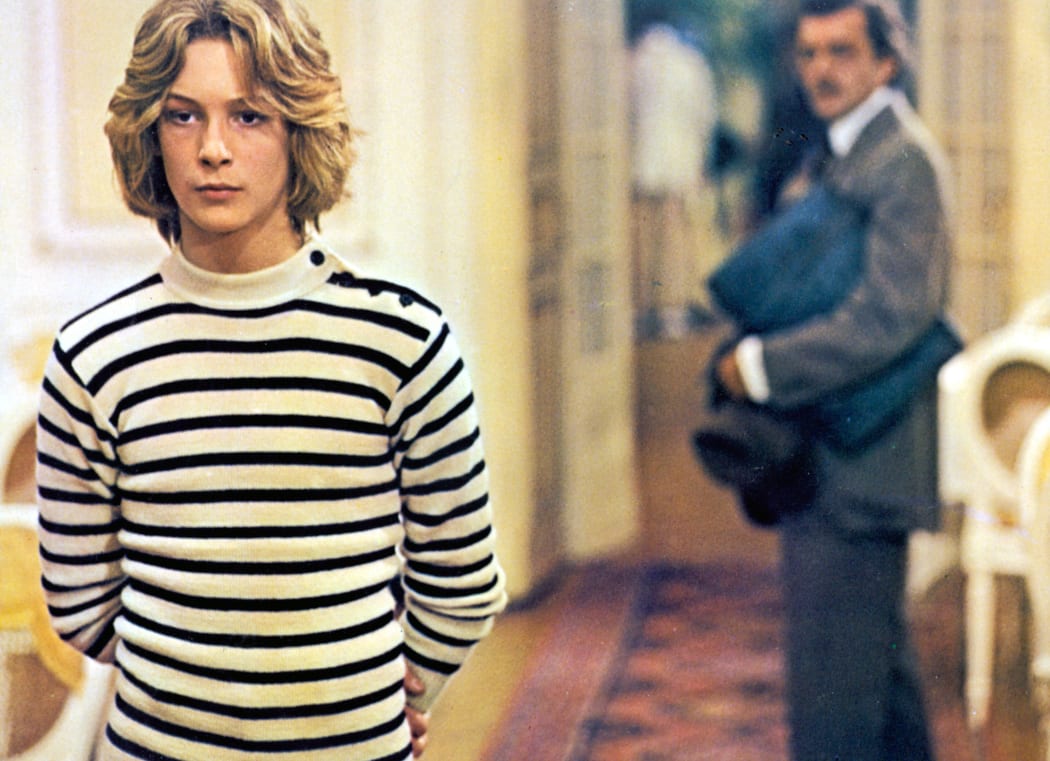
Björn Andrésen and a distant Dirk Bogarde in Visconti’s adaptation of Thomas Mann’s Death in Venice Photo: Warner Bros
Talking about non-American (or un-American) films, some stone-cold classics came out of Europe that year. Visconti’s Death in Venice (1 March), Bertolucci’s The Conformist (Feb 1971), Joseph Losey’s The Go-Between won the Palme d’Or that year and was released on 13 Dec. Vittorio De Sica’s masterpiece adaptation of Bassani’s epic novel of the rise of Italian fascism, The Garden of the Finzi-Continis won the Golden Bear at Berlin and arrived in American cinemas in time for Christmas - 13 Dec.
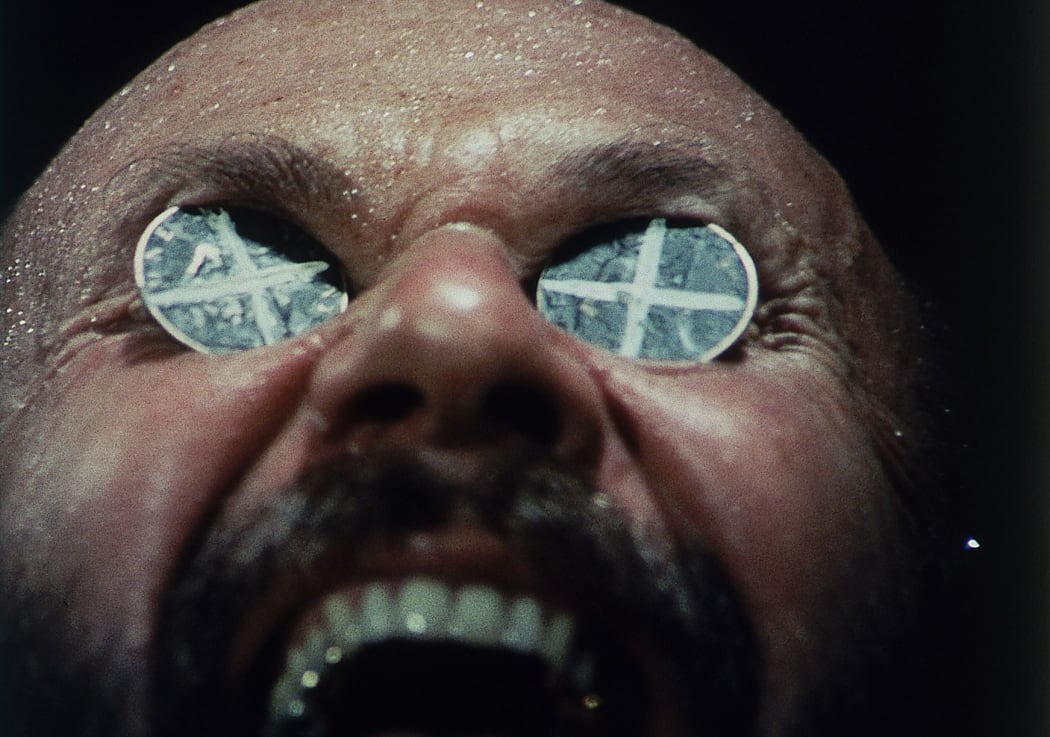
Donald Pleasance is unpleasant in Ted Kotcheff’s Wake in Fright Photo: Madman
New Zealand had no film industry to speak of in 1971 but Australia was thinking about having one. In 1971 Australia became the subject (before becoming the object later on) and Nicholas Roeg’s eerie Walkabout presented The Railway Children’s Jenny Agutter in a whole new light and introduced the world to the phenomenon that is David Gulpilil.
The man who would one day direct Stallone in Rambo, Ted Kotcheff, made Wake in Fright, one of the most startling, original and terrifying psychological thrillers ever. In the forbidding and foreboding outback a bonded teacher just wants to go home to Bondi for the holidays but instead meets crazy Donald Pleasance and feral Jack Thompson and his mates.
More on 1971 and the movies
@JMulliganRNZ @danslevin @davidhepworth The year that gave us THE LAST PICTURE SHOW, HAROLD & MAUDE & GET CARTER deserves respect.
— Chris Hormann (@TheMyrka) September 13, 2016
@TheMyrka @JMulliganRNZ @danslevin @davidhepworth and STRAW DOGS, A CLOCKWORK ORANGE, WILLY WONKA ... SWEET SWEETBACKS BADAASSSS SONG too..
— Robert Johnson (@deltablues_king) September 13, 2016
@deltablues_king @JMulliganRNZ @danslevin @davidhepworth As well as EL TOPO, DEATH IN VENICE & THE MERCHANT OF FOUR SEASONS. Superb year.
— Chris Hormann (@TheMyrka) September 13, 2016
El Topo – aarghh!!

